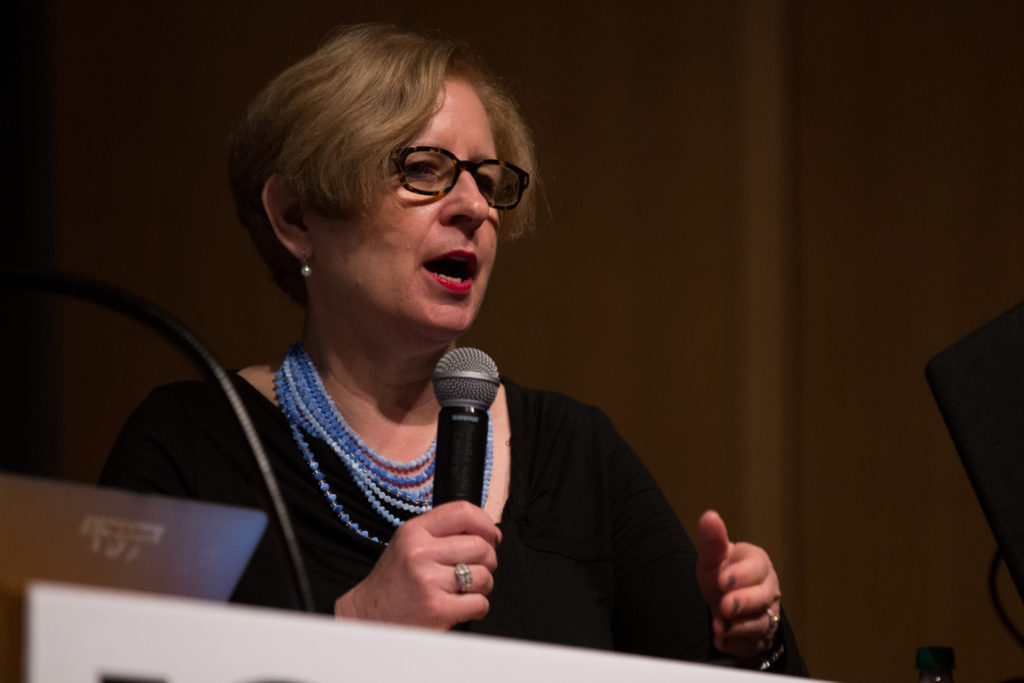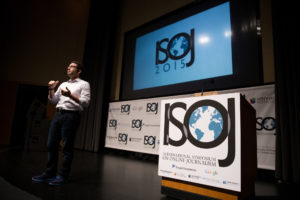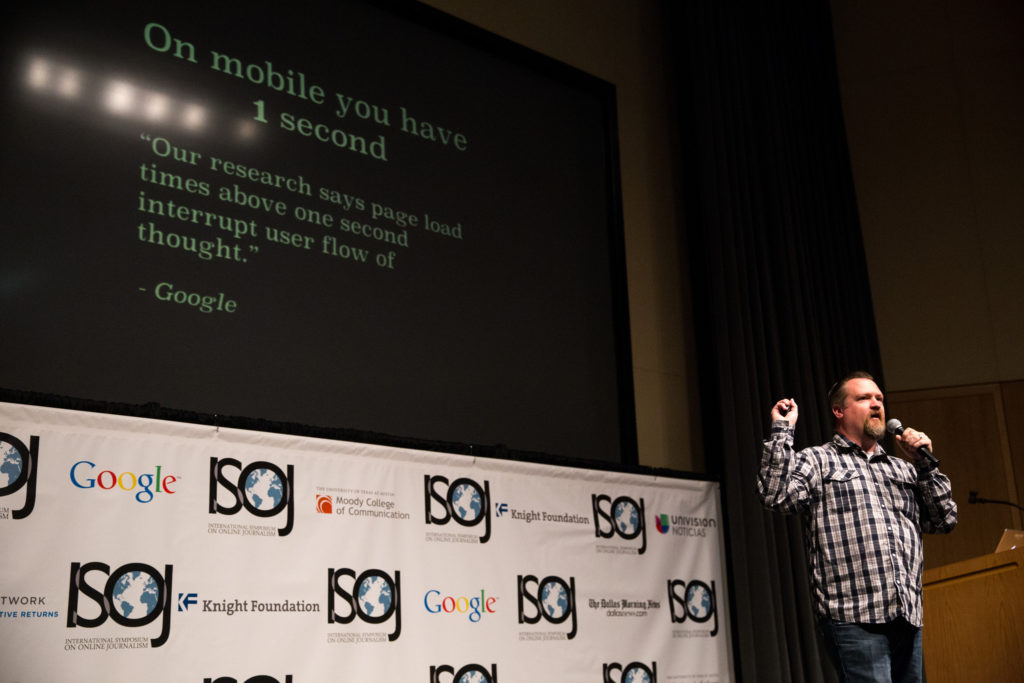April 17, 2015 | Mobile Journalism
Mobile media must pay heed to speed, context and users’ experiences, professionals suggest at ISOJ

Speed, content and personalization, these are the things media companies need to prioritize if they want to succeed in today’s mobile revolution — a hot topic during the afternoon of the first day of the International Symposium on Online Journalism (ISOJ).
“Conversations about mobile will be everywhere at ISOJ,” said Ann Marie Lipinski, curator of the Nieman Foundation at Harvard University, while introducing a panel on Reformatting the news: How Journalism is responding to the mobile revolution and changes in consumers’ viewing and reading habits.
“It’s funny we are still calling it a revolution, since it’s been here for quite a while,” she said Friday. “I think the reason we still call it a revolution is because we are still trying to figure it all out.”
According to Drake Martinet, Vice Media’s global head of platform, the millennial generation, controlling the world of mobile, and their evolving news habits, is greatly misunderstood. Contrary to popular belief, millennials are actually news thirsty, he said.
“People that say millenials are not really into news are wrong … a whole generation of people is crying for something that no one is offering,” he said. “No one was meeting the news interests of millenials in a device, moment or manner that they could even consume.”

When dealing with the millennial generation, speed is key to success. According to Trei Brundrett, Vox Media chief product officer, media companies only have about one second to keep or lose a viewer.
“If you have to put something on the screen for one second, what are you going to put on that screen?” Brundrett asked.
“Speed is the most important feature of mobile,” he said. “All the social traffic that we’re getting through news is coming through mobile.”
About 20 percent of Google searches are on mobile. Google tracks page load time and uses it to signal whether a page is mobile-friendly or not. The average website load speed in mobile is seven seconds, said Brundrett, and for Vox seven seconds is too much.
“We obsess over it, we think about it all the time,” Brundrett said, referring to strategies Vox uses to reach viewers within a blink of an eye.
Currently, Vox counters with three engineers focused on user experience. The Verge, Vox’s new technology site, takes five seconds to load for the first time and only one second to load any time after that.

Speed saves time and generates money—one of the reasons Vox News’ CEO emphasizes this factor as much as the company’s content producers.
“The whole company has to be thinking about the speed,” said Brundrett.
Stacy-Marie Ishmael, Buzzfeed News editor for news apps, recognized the importance of speed, but said it was not enough.
“Once you’ve nailed speed, what are you doing about context?” she asked. “Which I argue is the second most important thing about mobile.”
Ishmael said it is important to take various contexts into consideration when reaching out to audiences.
“The context in which the audience is operating, the context in which you are operating,” she said. “News sites are used to delivering updates to their audience that might be important to the editor, but not necessarily important to the person on the other side of the screen.”
According to Ishmael, the intimate relationship today’s average viewers have developed with their phones has changed their tolerance for news they do not care about.
As users’ relationship to their phones evolves, the definition of mobile has too. The Buzzfeed editor said the notion of mobility in the context of mobile is less and less true. People use their phone for everything, not only when they are not home or have no other available devices.
“People are married to their devices, they invite them into their lives,” she said. “You have your television in your room, but you have your phone in your bed.”
Buzzfeed takes the user experience personally. Ishamel understands most viewers do not consider technology and media resources when engaging with the Web.
“Most of the people in the world are not in the U.S. or Western Europe, we have people in other countries where mobile is their primary connection,” she said. “We assume that people are coming to the sites able to do all the things that we take for granted.”
Ishmael goes as far as distributing lower-quality phones to the Buzzfeed staff in order to allow content producers to develop a deeper connection to their audience.
“Creating and viewing content in the same context audience will be viewing it in,” she said. “Imagine that you are a new user encountering your site for the first time … we need this to understand what it is to be a mobile journalist.”

Taking mobile-user relationships into consideration, Adam Symson, E.W. Scripps Co.chief digital officer and senior vice president, talked about the historic traditions of broadcast being focused on broad audiences and the tension it creates.
“Media today is still acting very over-broad,” Symson said. “If you are not going to spend time to understand who the consumer is, or do market-segmentation, then you are not going to remain relevant to your consumer.”
Symson thinks consumers need to be the center of the discussion. In order to achieve that, he recommended installing systems focused on understanding not only what is important to the market, but also to the most loyal consumers.
“Trade something with them for their identity — make the invisible visible, harness the ubiquity of mobile,” he said, suggesting the incorporation of registration systems.
“The amount of information you can have in your pocket is really mind-boggling,” Symson said. “If you do partnerships with local merchants, to understand how people are living their offline life, you can know what interests them.”
“The more relevant the content, the more they will engage with it,” he said.
This 16th annual edition of ISOJ, which continues Saturday at the Blanton Museum of Art, on the campus of the University of Texas at Austin, is being livestreamed in English here, and in Spanish here.
ISOJ 2015: Reformatting News Q&A, from Knight Center on Vimeo.

